Channeling the Past to Face the Future: Restoring Ancient Aqueducts in Peru
In the Peruvian Andes, communities use nature, science and history to maximize every drop of water in one of the world’s driest places.

Picture Perfect Morning clouds shroud California’s Big Sur coastline, south of Monterey Bay. © Frans Lanting
Sign up for the Nature News email and receive conservation stories each month.
From its headwaters in the hills of the Los Padres National Forest, the Salinas River heads northwest through central California, carving a narrow green ribbon on its way to meet the sea at Monterey Bay. Beyond the river’s end, hidden beneath the waves, a vast submarine chasm cleaves the seafloor in two, rivaling the Grand Canyon in size and splendor. These unique geographical features knit together land and sea to create a dazzling ecosystem unlike any other.
Cold water wells up from the undersea canyon, cooling the air above to shroud the coast in fog. That misty microclimate has helped the Salinas Valley establish itself as the “salad bowl of the world,” producing berries, broccoli and nearly half the nation’s lettuce. The upwelling of canyon waters also ferries a steady stream of nutrients into the water column, feeding a stunning diversity of marine life. Long before Europeans arrived, Indigenous people relied on that bounty, harvesting resources like abalone and salmon. Later, European fur traders came for the otters, and a booming commercial fishing industry sprung up to harvest anchovies and sardines, giving rise to Monterey’s famed Cannery Row.
But after World War II, anchovy and sardine populations fell off a cliff. “It was one of the first visible signals that our oceans are not infinite,” says Tom Dempsey, oceans program director for The Nature Conservancy in California. “And it wasn’t just happening in the water. From overexploitation of fisheries to loss of forests and coastal dune removal, a history of mismanagement left significant impacts on the bay.”
The 21st century has delivered new threats. Transformed by development, much of the shoreline has lost its natural buffer against rising sea levels. Beneath the surface, warming waters spark a domino effect of ecosystem changes that upend food chains and put iconic species like blue whales and giant kelp at risk. Yet this area also has a long history as a hub for marine research and conservation.
For decades, TNC and partners have been working in and around these waters, pioneering projects to protect wildlife, conserve and restore essential habitat, and support sustainable harvests. “Monterey Bay is on an upward trajectory,” Dempsey says. But it will take a comprehensive approach that reaches across geographies to ensure that progress continues.
No place highlights the need for evolving conservation strategies better than Elkhorn Slough, an estuary born where fresh water meets the salty bay. In 1971, TNC purchased the first wetlands of what would become the Elkhorn Slough National Estuarine Research Reserve. Today, the slough encompasses more than 5,000 protected acres of mudflats, marshes, eelgrass beds and woodlands. More than half a century after that first land deal, TNC is working with the Elkhorn Slough Foundation to scale up restoration of native Olympia oysters, which nearly disappeared because of pollution and overharvesting that began during the 19th-century Gold Rush. Healthy populations of these mollusks form beds that shelter juvenile fish and invertebrates, and also act as natural filters to improve water quality.
Unfortunately, the challenge of managing harvests continues. In 2000, after years of dwindling catches, the government declared the West Coast groundfish fishery a federal disaster. To help rebuild the beleaguered fishery, TNC partnered with local fishermen to launch the California Groundfish Project. Partners came at the problem from multiple angles: designing new tools to minimize the catch of nontarget species, generating more precise data for tracking fish populations in real time, and forging partnerships that gave fishermen a voice in developing ecologically and financially sustainable policies. The turnaround was dramatic, and the groundfish fishery is now seen as a model of fisheries management in the United States, Dempsey says.
Still, ocean conservation can feel like a game of Whac-A-Mole. As soon as one threat is contained, two more pop up in its place. In the last decade, unprecedented marine heat waves and disease have triggered a cascade of changes in the region’s once-dense kelp forests. To keep tabs on the threat, TNC staff and research partners developed Kelpwatch, a web-based visualization tool that collects data from satellite imagery to track real-time changes in the kelp canopy. The tool documented a 90% decline in the kelp canopy around the Monterey Peninsula over the past 10 years.
Yet Monterey Bay is emerging as a model for a new kind of conservation—one that looks across borders and biomes to consider the natural system in its entirety. “These ecosystems are interconnected,” Dempsey says. “Here in Monterey, we’re demonstrating that by leaning into those intersections, we can secure a future of abundance and resilience.”
These photos from Frans Lanting and writer Chris Eckstrom’s book, Bay of Life, showcase what’s at stake around Monterey Bay—and reveal how work to protect this natural wonder is leaving a lasting legacy on the Central Coast of California.
Monterey Bay has a rich history as a hub for marine life and commercial fishing, but 20th-century challenges have demanded innovative conservation work to ensure the long-term health of the region.
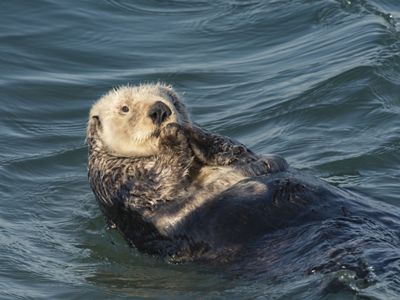
Remnant population of southern sea otters, believed extinct, are rediscovered near California’s Big Sur Coast. By the 1960s, they have spread north to Monterey Bay.

TNC protects the first parcel of salt marsh habitat in what will become the Elkhorn Slough National Estuarine Research Reserve.
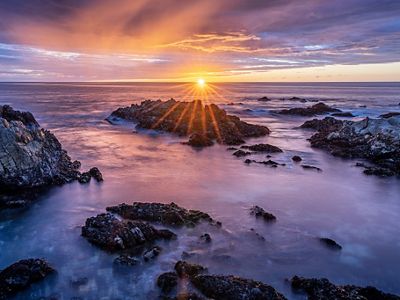
U.S. government designates the Monterey Bay National Marine Sanctuary, a protected area larger than Yellowstone National Park.
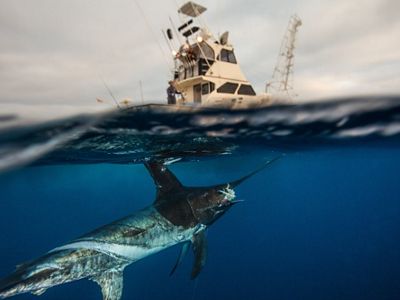
After fish stocks collapse, TNC helps launch the California Groundfish Project to drive a more economically and environmentally sustainable fishing industry.
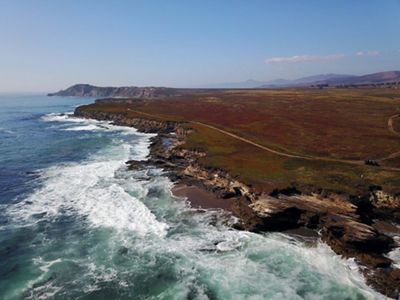
TNC leads a private buyout of groundfish permits and vessels and helps establish no-trawling zones that protect 3.8 million acres of habitat along the central California coast.

With input from TNC scientists, California finalizes the nation’s first statewide, science-based network of marine protected areas—including more than a dozen in and around Monterey Bay.
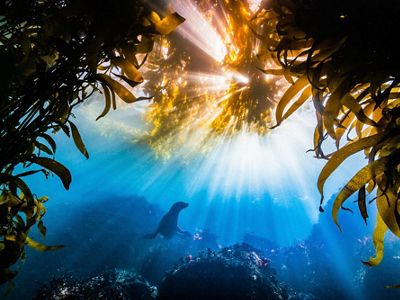
The Pacific coast experiences the first in a series of extreme marine heat waves, triggering dramatic declines in kelp and a cascade of other ecosystem changes.

TNC launches a strategy to prevent whale entanglements in fishing gear and deploy rapid responders to free entangled whales.
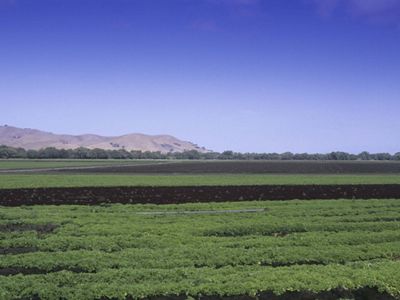
TNC helped partners acquire a 254-acre property at the Pajaro River Estuary. Restoration of the estuary will help protect communities from sea level rise and may serve as a model for natural climate solutions.

A coalition of partners including TNC receive a $71 million grant from the NOAA Climate Resilience Regional Challenge to strengthen ecosystem and habitat resilience around Monterey Bay.
Check out more articles from our latest issue!